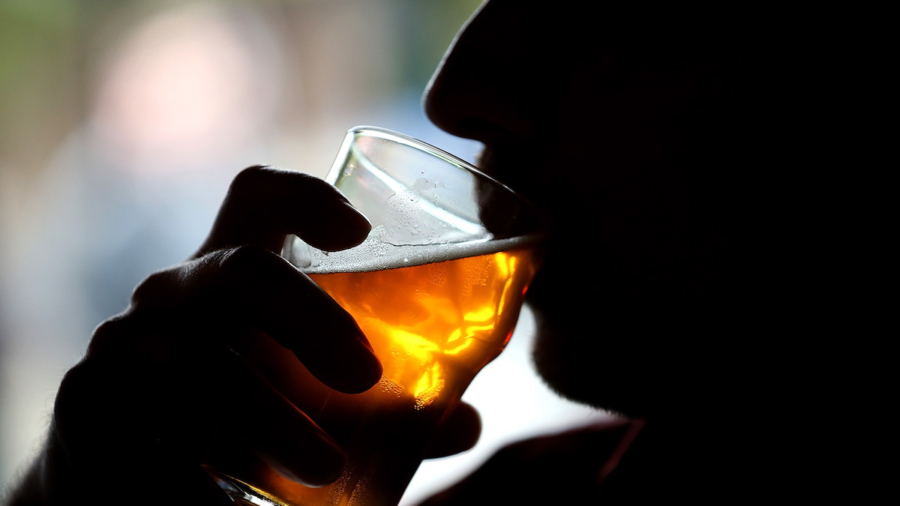A new report has found drinking alcohol can lead to cancer, with heavier consumption raising the chances of developing the disease. As part of the American Association for Cancer Research’s 14th annual Cancer Progress Report, researchers also identified six cancers tied to heavy drinking.
According to their research, excessive consumption increases the odds of developing six different cancer types, including head, neck, esophagus, liver, and stomach cancers. Researchers found drinking alcohol from a young age also increases the odds of developing cancer later in life, increasing the odds up to 1.5 times for colorectal cancer—a form of colon cancer—in young adults.
Around 40 percent of all cancers in the U.S. are associated with modifiable risk factors, which researchers say include alcohol. As of the latest data, 5.4 percent of cancers were attributed to alcohol in 2019.
The report also shows a link between drinking during pregnancy and children being born with leukemia. Researchers found alcohol consumption can affect the developing fetus, with the degree of alcohol consumed increasing the risk.
One of the findings from a large meta-analysis among cancer patients found moderate drinking during pregnancy can increase the risk of leukemia by 1.6 times in children and by 2.4 times with heavy consumption.
Also studied was the mental health of cancer survivors among children and young adults. Researchers found survivors had an increased feeling of loneliness compared to their healthy siblings or peers, which can result in developing anxiety, depression, smoking habits, and heavy drinking habits.
As measured by the Alcohol Use Disorders Identification Test—a simple screening method used to identify alcohol use disorders—around 77.7 percent of individuals who’ve had cancer drink alcohol, with a quarter drinking more than six drinks in one sitting and more than 38 percent “hazardous” drinkers, according to the study.
Overall, cancer rates are on the decline thanks to technological advances allowing for earlier detection. The overall cancer death rate among children and adolescents declined by 24 percent in the U.S. in the past two decades, according to AACR. The five-year relative survival rate for children diagnosed also improved from 58 percent in the mid-1970s to 85 percent for diagnoses between 2013 and 2019.
Despite advances in technology, challenges remain. Incidence rates for some cancers, including HPV-associated oral cancers and cervical cancers in young adults, are increasing. The report estimates that in 2024, the U.S. may see more than 2 million new cases diagnosed, with over 611,000 people expected to die from the disease.
The report also looked at how a diagnosis hurts a patient financially. Researchers found that more than 40 percent of cancer patients within the first two years of treatment can spend their life savings, with lifetime costs of cancer for adolescents and young adults estimated at $259,324.
AACR CEO Margaret Foti stressed the importance of federal support, stating, “To maintain this pace of progress for patients, robust and sustained funding for cancer research must remain a national and congressional priority.”

